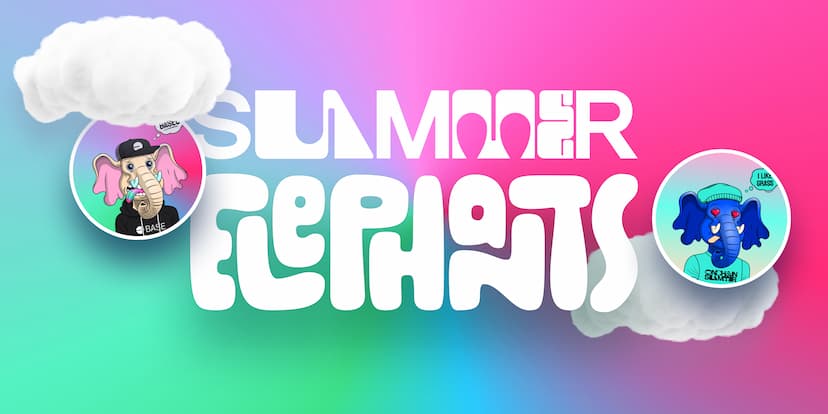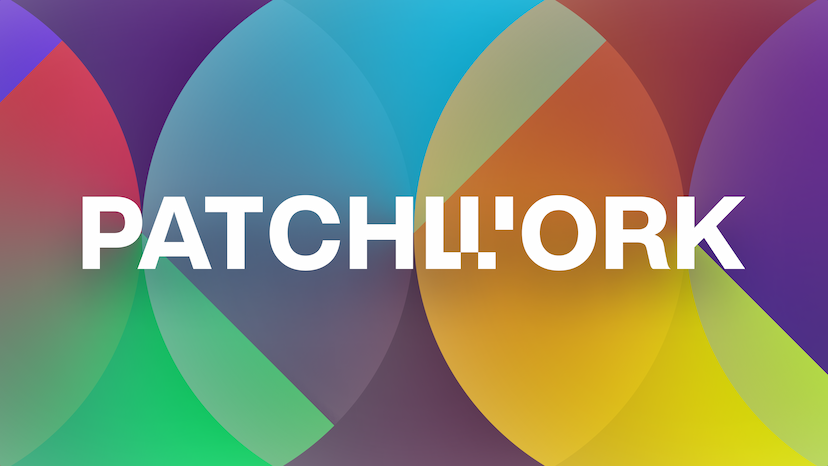Patchwork Protocol brings metadata to the metaverse. It supercharges tokens, contracts, and addresses by layering rich blocks of interoperable, interconnected, interactive data on top of any onchain entity.
Limited only by your imagination. Fully onchain data, fully friendly with smart contracts, fully awesome.
Rich features with an amazing, low-code developer experience
- Fully onchain data
- Custom data schemas
- Granular data permissions
- Flexible ownership models
- Transferable data chunks
- Updatable data & schemas
- Soulbind to onchain entities
- Payable data functionsSoon
- Wildly easy codegen
- Awesome protocol primitives
- App mint fee collectors
- Third-party whitelists
- Robust APIs & indexersSoon
- App namespace reservations
- Zero knowledge dataSoon
- Paid app subscriptionsSoon
- Onchain factoriesSoon
Super easy.
{Supercharged.}
Our Patchwork Devkit lets you define data schemas in JSON, and automatically generates your contracts, bindings, ABIs, and Typescript libraries (coming soon).
Patchwork lets you permissionlessly layer your data on top of any onchain token, contract or address. Building a standalone project? Patchwork lets you do that too!
Once Patchwork Devkit has finished your codegen, deploying your app is as easy as running deploy in the CLI. Deploy to a single chain or multiple chains, no extra work required. (Deploy functionality coming soon!)
How it
works
Patchwork stores your app data entirely onchain, placed in permissionless layers on top of onchain entities.
I. Patchwork721
Patchwork stores your app data entirely onchain in data containers that ultimately mimic a database. Patchwork data containers are Patchwork721 contracts & tokens, which are ERC721s that inherit special Patchwork interfaces for handling efficient data storage and protocol interaction.
The schematic blueprints (columns) for the data live in the Patchwork721 contract, and the datasets themselves live in the minted NFTs within the contract, with each token acting as a row and the token's ID acting as a primary key. Schemas and datasets have full data availability in the EVM and are queryable by any smart contract.
Additionally, Patchwork also introduces the ability to permanantly and permissionlessly soulbind—or Patch—these datasets to other existing onchain entities (can be a contract address, EOA, non-fungible token, etc.). Any developer can annotate and extend the onchain world with their own vibrant data, and anyone else can do the same to that developer's data.
Patches are perfect for adding context to and building on top of existing projects by their communities or external parties, while standalone P721s supercharge new ERC721-centric apps by implementing Patchwork's suite of standard interfaces directly in their contracts, unlocking the powerful functionality, network effects, and data-richness of Patchwork and its protocol.
II. Powerful, discrete records
The real power of Patchwork comes from the use of discrete data entities called Fragments. Fragments are individual pieces of data encapsulated in an entirely separate P721 token. They can be assigned to (and unassigned from) a parent P721, and can be bought, sold, and traded by users just like any regular NFT.
While a Fragment is assigned, ownership changes made to its parent cascade to the Fragment and its siblings. The protocol ensures that P721s bring along their full tree of descendant Fragments atomically when they're transferred/sold.
Fragments unlock a new frontier of data richness for the EVM. Secondary markets can spring up for the exchange of valuable data records, users can swap traits and attributes with their peers, projects can collaborate on and share core pools of data, and creators can continually add to and grow the flavors of data available to their users.
III. Protocol orchestration
The interoperable and interconnected nature of Patchwork data requires a high degree of orchestration, provided by Patchwork Protocol.
App contracts are deployed to the protocol by a Publisher, and the Protocol organizes these into top-level app namespaces called Scopes.
The Protocol manages Scope assignments to prevent collisions with other apps, orchestrates the assignment and unassignment of Fragments, and maintains data integrity & Publisher permissions for apps.
Use
Cases
If you can dream it, you can build it with Patchwork. Shape your data entirely to your needs, add relationships to your data, and encapsulate it in different primitives. Attach it to any onchain entity, or launch it as a standalone project.
Perfectly suited to projects old & new. Use it wherever data availability, interoperability, mutability, and extensibility are desired.
Gaming
Store rich game state, player progress, and nuanced itemization. Let users freely trade their inventories with other players. Let other creators mod your game via their own data layers and see your game IP grow through extensibility.
Social
Attach annotations, community interactions, and reactions to an NFT or address. Organize users into factions through gated access controls that only allow members whose NFT has a certain trait to join.
Loyalty
Attach a detailed record of a user's journey to their account or NFT. Reward them with targeted airdrops based on their history and actions, and unlock special rewards when they complete questlines.
Reputation
Create certificate authorities that verify the security of onchain contracts and prevent interaction with them when unsafe. Layer detailed reputation profiles on top of user EOAs and grant/revoke privileges when score thresholds are met.
Art
Break your NFT project down into individual attributes and let users mix-and-match them to create their own custom artwork. Continually release new traits over time to keep your community engaged and secondary market lively.
Latest Posts




